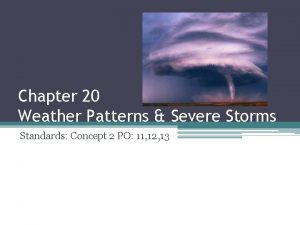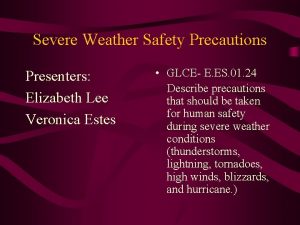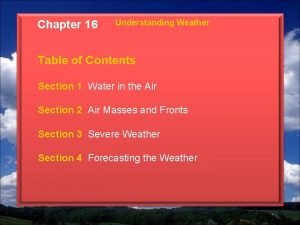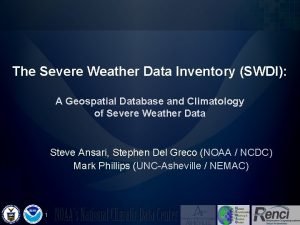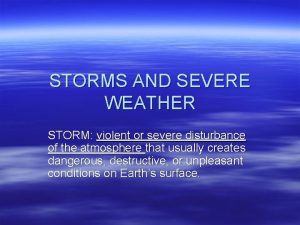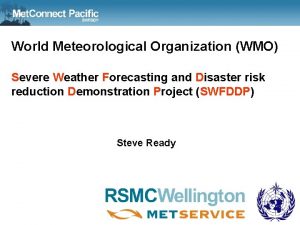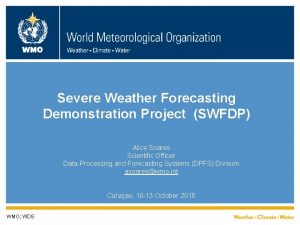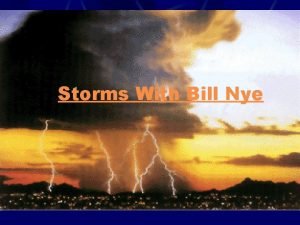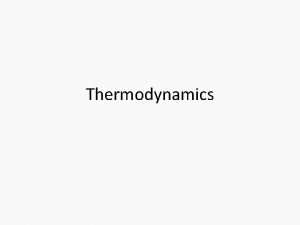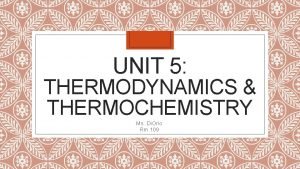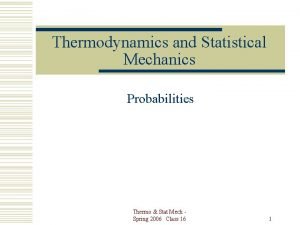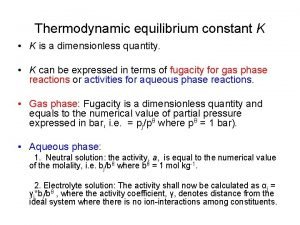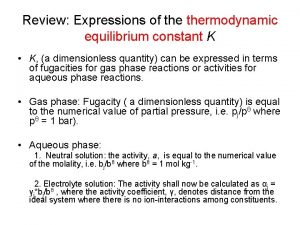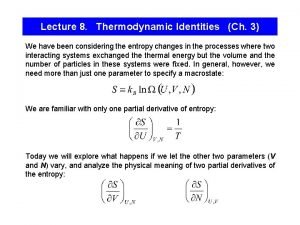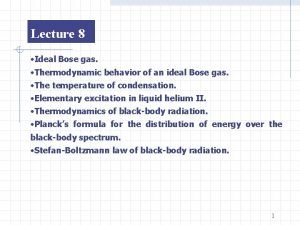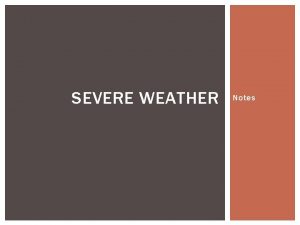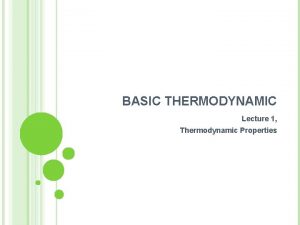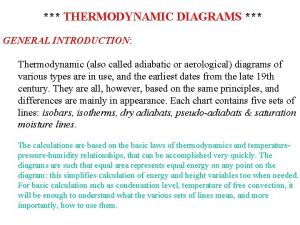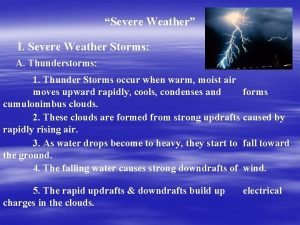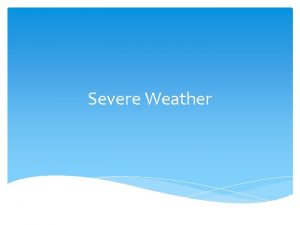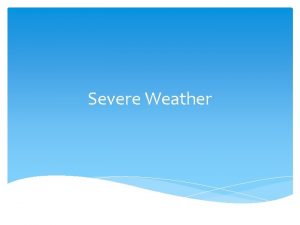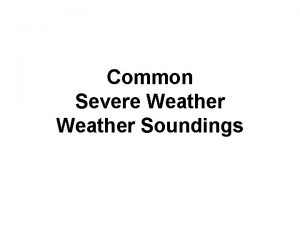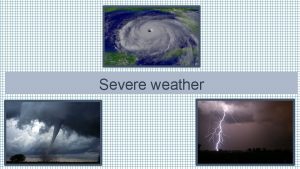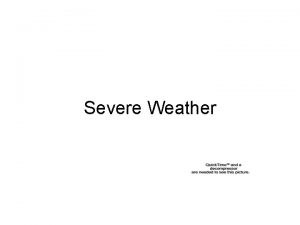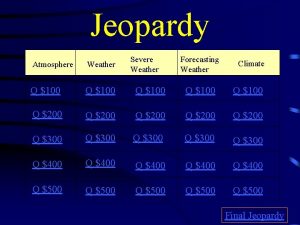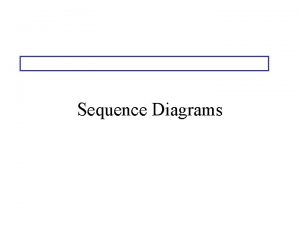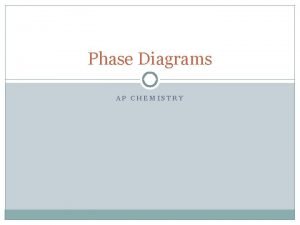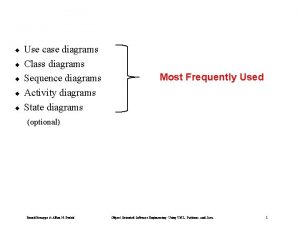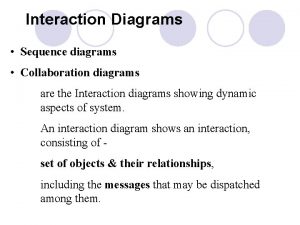Thermodynamic Diagrams and Severe Weather What is Severe
























- Slides: 24

Thermodynamic Diagrams and Severe Weather

What is Severe Weather? Tornado Hail > or = 3/4 inch Wind > 50 knots

Convective Available Potential Energy (CAPE) • Remember: Area on a thermodynamic diagram is proportional to energy. • CAPE is also called buoyant energy. • CAPE on a thermodynamic diagram is the area between the parcel and the environment temperatures from the LFC to the EL • CAPE is a measure of instability

CAPE

CAPE

Maximum Updraft Speed • If we convert the potential energy of CAPE to a kinetic energy, we can get the maximum speed of any updraft that may develop.

Convective Inhibition (CIN) • CIN is NOT negative CAPE!!!!!! • CAPE integrates from the LFC to the EL, CIN integrates from the surface to the LFC • Is a measure of stability • Reported as an absolute value

CIN

Overcoming Convective Inhibition • A convective outbreak rarely occurs from surface heating alone! • Triggering Mechanisms for T-Storms – – – fronts dry lines sea-breeze fronts gust fronts from other thunderstorms atmospheric bouyancy waves mountains

Cap Strength • Very important for severe weather to develop • Too little or no cap: happy little cumulus everywhere • Too strong of a cap: nothing happens • Just the right amount of a cap: Severe Weather


• At the inversion* look at the temperature difference between the parcel and the environment.

Shear vs. CAPE • Need a balance between Shear and CAPE for supercell development • Without shear: single, ordinary, airmass thunderstorm which lasts 20 minutes • If shear is too strong: multicellular t-storms (gust front moves too fast)

CAPE and Shear

Shear Just Right • 2 -D equilibrium: squall line develops A A B B • 3 -D equilibrium: right moving and left moving supercells Left Mover Right Mover

Bulk Richardson Number (BRN) BRN= CAPE 1/ 2 Uz 2 (where U is a measure of the vertical z wind shear)

V Hodographs • Draw wind vectors in direction they are going U • This is opposite of how the wind barbs are drawn Wind speed

Example

Straight Line Shear 700 • Storm Splitting: – R and L storm cells move with mean wind but drift outward 1000 850 900 500

Curved Hodograph • Emphasizes one of the supercells – Veering (clockwise curve): • right moving supercells • warm air advection in northern hemisphere – Backing (counter clockwise curve): • left moving supercells • warm air advection in southern hemisphere 700 850 900 1000 500 300

Straight Line Hodograph Curved hodograph

Helicity • Can be thought of as a measure of the “corkscrew” nature of the winds. H = velocity dotted with vorticity =V • ζ = u (dyw - dzv) - v (dxw - dzu) + w (dxv - dyu) • Higher helicity values relate to a curved hodograph. – large positive values--> emphasize right cell – large negative values--> emphasize left cells • Values near zero relate to a straight line hodograph.

CAPE and Helicity • Plainfield, IL tornado: CAPE=7000 Helicity=165 Energy Helicity:

Supercell Index • Weights various parameters which are indicative of possible supercell development
 Chapter 20 weather patterns and severe storms
Chapter 20 weather patterns and severe storms Chapter 20 weather patterns and severe storms
Chapter 20 weather patterns and severe storms Severe weather safety precautions worksheet
Severe weather safety precautions worksheet Chapter 16 section 3 severe weather answer key
Chapter 16 section 3 severe weather answer key Severe weather data inventory
Severe weather data inventory Downdraft
Downdraft Wmo severe weather
Wmo severe weather Swfdp
Swfdp Bill nye severe weather
Bill nye severe weather The interaction diagrams, use case diagrams are called as
The interaction diagrams, use case diagrams are called as An activity diagram is a static model.
An activity diagram is a static model. Intensive properties
Intensive properties Station plot
Station plot Poem whether the weather
Poem whether the weather Poems about seasons changing
Poems about seasons changing Its stormy
Its stormy Whether the weather is fine or whether the weather is not
Whether the weather is fine or whether the weather is not Heavy weather by weather report
Heavy weather by weather report Capital weather gang weather wall
Capital weather gang weather wall Thermodynamic vs kinetic control
Thermodynamic vs kinetic control Microstates in thermodynamics
Microstates in thermodynamics Thermodynamic equilibrium constant k
Thermodynamic equilibrium constant k Thermodynamic equilibrium definition
Thermodynamic equilibrium definition Thermodynamic identity
Thermodynamic identity Thermodynamic behaviour of ideal bose gas
Thermodynamic behaviour of ideal bose gas

